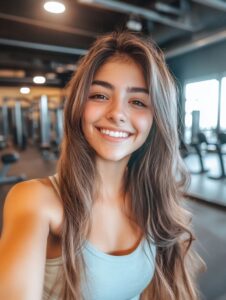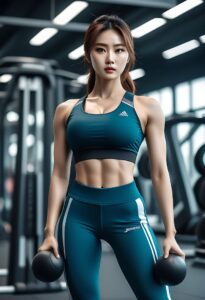Virtual Beauty Worldwide: A Cultural Comparison sets the stage for this enthralling narrative, offering readers a glimpse into a story that is rich in detail and brimming with originality from the outset.
As we delve into the concept of virtual beauty across different cultures, exploring its evolution over time and its significance in today’s digital age, a fascinating journey unfolds before us.
Introduction to Virtual Beauty Worldwide
Virtual beauty refers to the concept of enhancing one’s appearance using digital tools and technologies, such as filters, editing software, and virtual makeup applications. This phenomenon has transcended geographical boundaries and has become a global trend in today’s digital age.Over time, virtual beauty has evolved significantly across different cultures, reflecting varying beauty standards, trends, and preferences.
From the rise of K-beauty in South Korea to the influence of Western beauty ideals in Hollywood, virtual beauty has adapted to suit the diverse needs and desires of individuals worldwide.In today’s digital age, virtual beauty plays a crucial role in shaping how individuals perceive themselves and others online.
With the prevalence of social media platforms and the rise of influencer culture, the pressure to achieve flawless beauty standards virtually has never been higher. As a result, virtual beauty has become a powerful tool for self-expression, creativity, and self-enhancement in the digital realm.
Cultural Perspectives on Virtual Beauty
Virtual beauty is perceived differently across various cultures, shaped by unique norms and values that influence beauty standards. Let’s explore how different cultures interpret and embrace virtual beauty trends.
Asian Cultural Influence
In many Asian countries, porcelain skin, large eyes, and a slim face shape are considered traditional beauty standards. This has led to a surge in popularity of beauty filters and apps that enhance these features, catering to the cultural preference for a more youthful and delicate appearance.
Western Cultural Influence
Western cultures often emphasize features like defined cheekbones, full lips, and a sun-kissed complexion. Virtual beauty trends in these regions tend to focus on achieving a glamorous and sophisticated look, with filters and editing tools designed to enhance these specific attributes.
African Cultural Influence
In African cultures, beauty is often celebrated in diverse forms, including natural hair textures, rich skin tones, and bold facial features. Virtual beauty trends in these regions aim to highlight and amplify these unique characteristics, promoting a sense of cultural pride and individuality.
Technology and Virtual Beauty
Technology plays a pivotal role in shaping virtual beauty trends worldwide, revolutionizing the way individuals interact with cosmetics and beauty products. From augmented reality applications to virtual try-on tools, the beauty industry has seen a significant transformation due to advancements in technology.
Innovative Virtual Beauty Tools and Applications
- Augmented Reality (AR) Makeup Apps: Platforms like YouCam Makeup and ModiFace allow users to virtually try on makeup products in real-time, providing a personalized and interactive beauty experience.
- Virtual Hair Color Apps: Tools like L’Oréal’s Style My Hair App enable users to experiment with different hair colors virtually before making a commitment, reducing the risk associated with drastic hair changes.
- Virtual Skincare Analysis: Companies like SkinCeuticals offer virtual skin consultations using AI technology to assess skin concerns and provide personalized skincare recommendations, enhancing the overall skincare experience.
Impact of Social Media on Global Spread of Virtual Beauty Trends
Social media platforms like Instagram, TikTok, and YouTube have played a crucial role in accelerating the global spread of virtual beauty trends. Influencers and beauty content creators showcase innovative beauty tools and techniques, reaching a vast audience and influencing consumer preferences worldwide.
The visual nature of social media allows for the rapid dissemination of virtual beauty trends, shaping beauty standards and preferences on a global scale.
Virtual Beauty and Self-Expression

Virtual beauty platforms have revolutionized the way individuals express themselves creatively, allowing for a wide range of experimentation with different looks. This newfound freedom has significant psychological implications for users seeking to enhance their self-expression.
Empowerment Through Creativity
- Virtual beauty tools empower users to experiment with various makeup styles, hair colors, and accessories that may not be feasible in real life.
- By providing a digital space for self-expression, individuals can explore their creativity without constraints, fostering a sense of empowerment and confidence.
- Platforms like AR makeup apps enable users to customize their appearance based on their mood, personality, or desired aesthetic, promoting a unique form of self-expression.
Exploring Different Looks
- Virtual beauty allows users to step out of their comfort zones and try new styles, helping them discover different facets of their identity and personality.
- Experimenting with virtual makeup and hairstyles can boost self-esteem and encourage individuals to embrace change and diversity in their appearance.
- Users can use virtual beauty tools to express their individuality and challenge societal beauty norms, promoting a more inclusive and diverse representation of beauty.
Pyschological Benefits
- Engaging with virtual beauty platforms for self-expression can have positive psychological effects, such as boosting self-confidence and promoting self-discovery.
- By allowing users to embody their ideal selves through virtual transformations, these platforms offer a safe space for exploring identity and enhancing self-image.
- Virtual beauty can serve as a form of therapy or self-care, enabling individuals to express their emotions, creativity, and personal style in a controlled and empowering environment.
Virtual Beauty Industry Trends

The virtual beauty industry is rapidly evolving, driven by technological advancements and changing consumer preferences. Let’s explore the latest trends shaping the virtual beauty landscape worldwide.
Augmented Reality (AR) and Virtual Try-On
- AR technology has revolutionized the way consumers experience beauty products, allowing them to virtually try on makeup, hair colors, and skincare products before making a purchase.
- Beauty brands are increasingly investing in AR tools to enhance the online shopping experience and provide personalized recommendations to customers.
- Key players like L’Oreal, Sephora, and MAC Cosmetics have launched virtual try-on features in their apps, catering to the growing demand for virtual beauty solutions.
Influencer Marketing and Virtual Beauty Influencers
- Influencer marketing continues to play a pivotal role in promoting virtual beauty products and trends, with influencers collaborating with brands to create engaging content and showcase virtual beauty transformations.
- Virtual beauty influencers, such as Shudu Gram and Lil Miquela, have gained popularity on social media platforms, influencing consumer preferences and setting new beauty standards.
- Brands are partnering with virtual influencers to reach a wider audience and stay ahead of the curve in the competitive beauty industry.
Artificial Intelligence (AI) and Personalized Beauty Solutions
- AI-powered beauty solutions are becoming increasingly popular, offering personalized skincare recommendations, virtual makeup consultations, and tailored beauty routines based on individual skin concerns.
- Beauty tech startups like HiMirror and Perfect Corp are leveraging AI algorithms to analyze skin conditions, suggest products, and track skincare progress, providing consumers with data-driven beauty solutions.
- The integration of AI in the beauty industry is expected to continue growing, enhancing the overall consumer experience and driving innovation in virtual beauty technologies.
Epilogue
In conclusion, Virtual Beauty Worldwide: A Cultural Comparison sheds light on the diverse perspectives, technological influences, self-expressive capabilities, and industry trends surrounding virtual beauty. It encapsulates a dynamic landscape where creativity, innovation, and cultural nuances intertwine to shape the beauty standards of tomorrow.
Questions Often Asked
How has virtual beauty evolved over time?
Virtual beauty has evolved from simple editing tools to sophisticated applications that offer a wide range of features to enhance one’s appearance digitally.
What are some key players in the virtual beauty industry?
Companies like YouCam Makeup, L’Oréal, and Sephora are among the key players driving innovations in the virtual beauty sector.
How does virtual beauty empower individuals to experiment with different looks?
Virtual beauty platforms provide a safe space for users to try out various makeup styles, hair colors, and accessories without any commitment, allowing for creative exploration.




